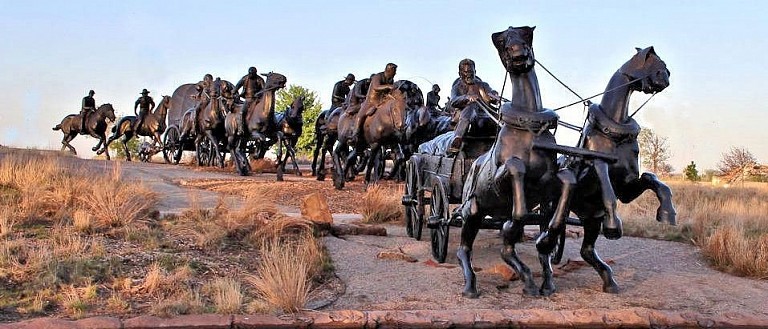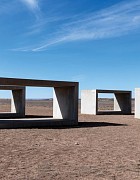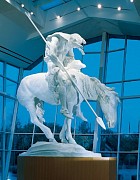



Blog: What Makes a Work of Art Great?
May 21, 2020 - Joy Reed Belt
While cleaning out some files last week, I came across an article I had downloaded from the Metropolitan Museum of Art website in 2017. The Met had conducted a survey in which they asked 12 Contemporary Artists "What it Takes to Make a Great Piece of Art.” I found the responses fascinating. So, I decided to conduct a survey of my own. I selected a group of 12 individuals including artists, architects, art educators, administrators, and collectors. I asked each to tell me what they believe to be the elements of a great work of art, and to provide me with at least one example of a great work. I am going to share their responses with you. For each participant I will include their bio, the criteria they use in evaluating art, and an image of the artwork(s) they selected as a great work of art. These responses will be presented as a series of blogs that will be posted intermittently during the next several months. Today I am conveying the thoughts and comments of two Oklahoma artists: Paul Moore and David Crismon, both of whom have shown in the Gallery. A collection of Paul’s most recent sculptures will be exhibited in the Gallery starting in June.
Paul Moore is a fifth generation Oklahoman and a citizen of the Muscogee (Creek) Nation. He has gained national and international recognition for his sculptures. A self-taught artist, Paul grew up listening to stories of his relatives who took part in major historical events, including the Trail of Tears. His grandfather was a neighbor of Quanah Parker. A recipient of more than 150 commissions, Paul’s work is in the United States Capital Collection, the John F. Kennedy Presidential Library and Museum, the Smithsonian, the National Portrait Gallery, the Oklahoma State Capitol and the University of Oklahoma. In 2018, he won an Emmy Award from the National Academy of Television and Arts and Sciences for the documentary, "Paul Moore: Monument Man." In 2019, he received the highest award given by the Cowboy Museum and Western Heritage Museum for his sculpture, "The Procession," as well as, the Robert Lougheed Memorial Award for "Navajo Country" and "The Wood Gatherers." Earlier this year, he completed a 25 year project, the "Oklahoma Centennial Land Run of 1889 Monument", one of the largest free-standing bronze sculptures in the world. It is approximately 365 feet in length with 45 life and a half size bronze elements of people, horses, and wagons. The monument is located in the Oklahoma City Bricktown River Wall Park. Paul currently serves as an Artist in Residence and as a Professor of Figurative Sculpture at the University of Oklahoma.
Without warning one evening, I placed a telephone call to Paul. After determining that I was not interrupting his dinner, I popped the question: “what makes a work of art great?” Paul paused, sighed, and very, very slowly and extremely thoughtfully said, “Well, there are a lot of factors, lots of factors. It’s really a lot of different things. All of these factors are important, but the most important one is that a great work of art has got to touch someone's life. He continued, “I know the first work that touched my life.” Then he began telling me about the first time he recognized a great work of art. It was when he was 12-13 years old and visited a museum for the first time. His parents took him to the Cowboy Hall of Fame and Western Heritage Museum in Oklahoma City and when he walked into the entry of the museum he saw "End of the Trail" by James Earle Frazier. "It moved me then and it still moves me today,” said Paul. Before walking into the museum, Paul's mother had handed him a camera with 5 shots left in it and told him to take photographs of the five pieces of art he liked the most. The first image Paul shot was "End of the Trail" and he still remembers the other four artworks that he photographed that day.
Realizing that it might be unfair to just call people and request thoughtful information. I sent David Crismon a text asking him what made an artwork great and an example. David’s email response was so beautifully written that I am going to share it with you in its entirety. David is an accomplished painter, mixed media artist and a Professor and the Director of Fine Arts at Oklahoma Christian College. He earned his BFA from the Kansas City Art Institute and his MFA from the University of Oklahoma. His work is in public and private collections throughout the United States.
"Teaching art and art history over the last 30 years, I’ve looked at thousands and thousands of images and I’ve had the opportunity to visit some of the best museums in the world. When the question of what makes a great work of art comes up, I actually go back to a quote from one of my professors in art school: “great art out thinks you, and out feels you.” In a world where much of the creative process is dictated by social media and quick attention, there is a price that comes with the lack of attention and scrutiny. Over time, I’ve come to prefer art works that require duration, patience, some research, unfamiliar emotions, and depth. I want time to get involved, to go deeper into the offered experience.
A good example? Donald Judd’s installation in Marfa, Texas. This has become a kind of pilgrimage for me, and I’ve visited the site about 4 times now, and each time I come away with something different. Oddly, the work gets lumped into the category of minimalism, it’s an unfortunate misnomer. Funny, being a painter, I would choose a work that is essentially based on space / context, but ironically, it’s the painterly qualities of the works I find most beautiful. That’s one.
"The End of the Trail," is one of the most highly recognized sculptures of the American West. It depicts a “weary Indian man hanging limp on his weary horse.” Frazier meant it as a commentary on the damage done by Euro-American settlers. It shows the suffering and exhaustion of the Native American people being moved from their land, from their way of life, to reservations. Paul told me Frazier created several versions of this sculpture until he was pleased with the result.
If I had to choose a painting, and there are a ton I could choose from to answer this question, I’d pick any of a number of works by John Singer Sargent. but a prime example would be Lady Agnew of Lochnaw. I saw this work in Ft. Worth and was transfixed by it! This will sound strange, but in a short period of viewing, I forgot I was looking at a painting. There is nothing there meant to trick the eye, no photographic mimicry, but I had never encountered a work with such direct beauty and presence. Hard to put into words, but the longer I looked into this thing, the more it offered. A strangely moving experience, and to my surprise everyone in the gallery was walking past it.
“So, I think great art offers this kind of experience, whether in written form, movies, music –whatever. There is a dislocation with our own being we undergo when we encounter true beauty and intensity. It doesn’t happen often, but it is transformative when it does. And the great thing is –you can keep going back, and each time you are taken just as deep, but always down a slightly different path. Don’t ask me how it’s done. Maybe it’s a secret, maybe even an accident, but the point of demarcation where a work of art truly becomes great, is a bit like being on the edge of cliff. Not very far away is something much, much bigger than what you may ever know, and we are able to experience it, and eventually return safely to what we feel is normal.”
Images:
"Oklahoma Centennial Land Run of 1889 Monument” by Paul Moore
“End of the Trail” by James Earle Fraser
Donald Judd’s installation in Marfa, Texas
“Lady Agnew of Lochnaw” by John Singer Sargent
Download Article (PDF)
Back to Blogs
